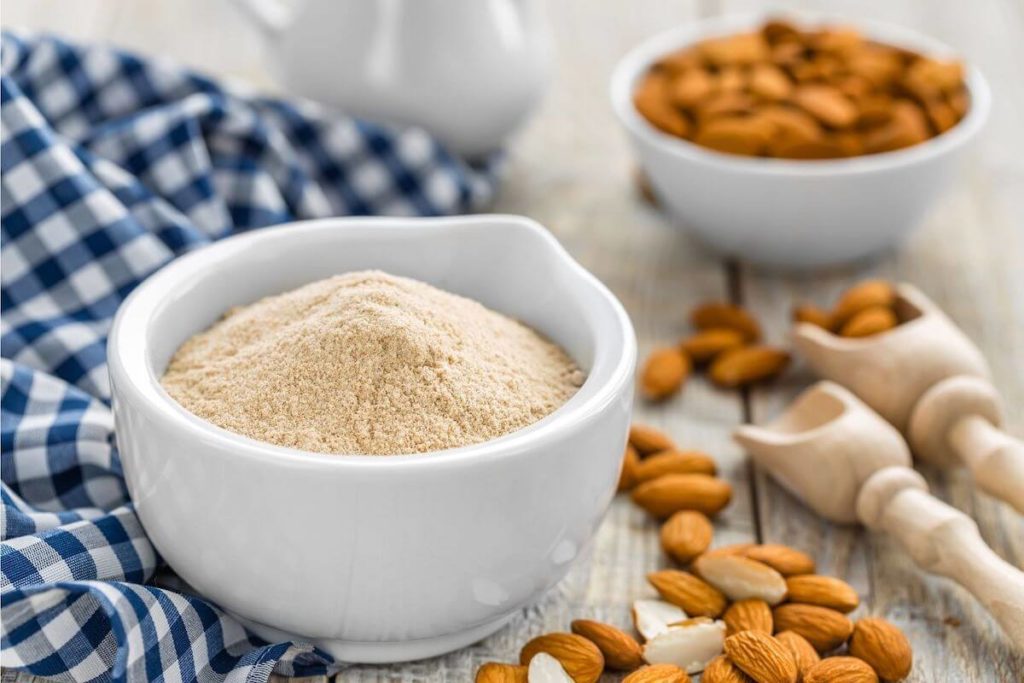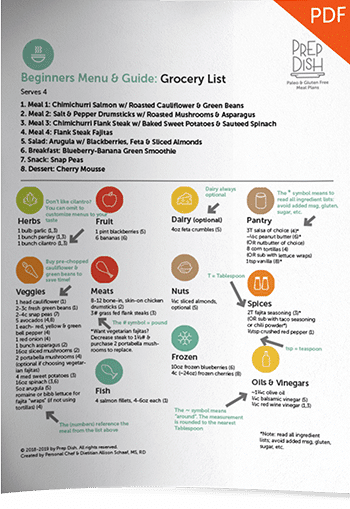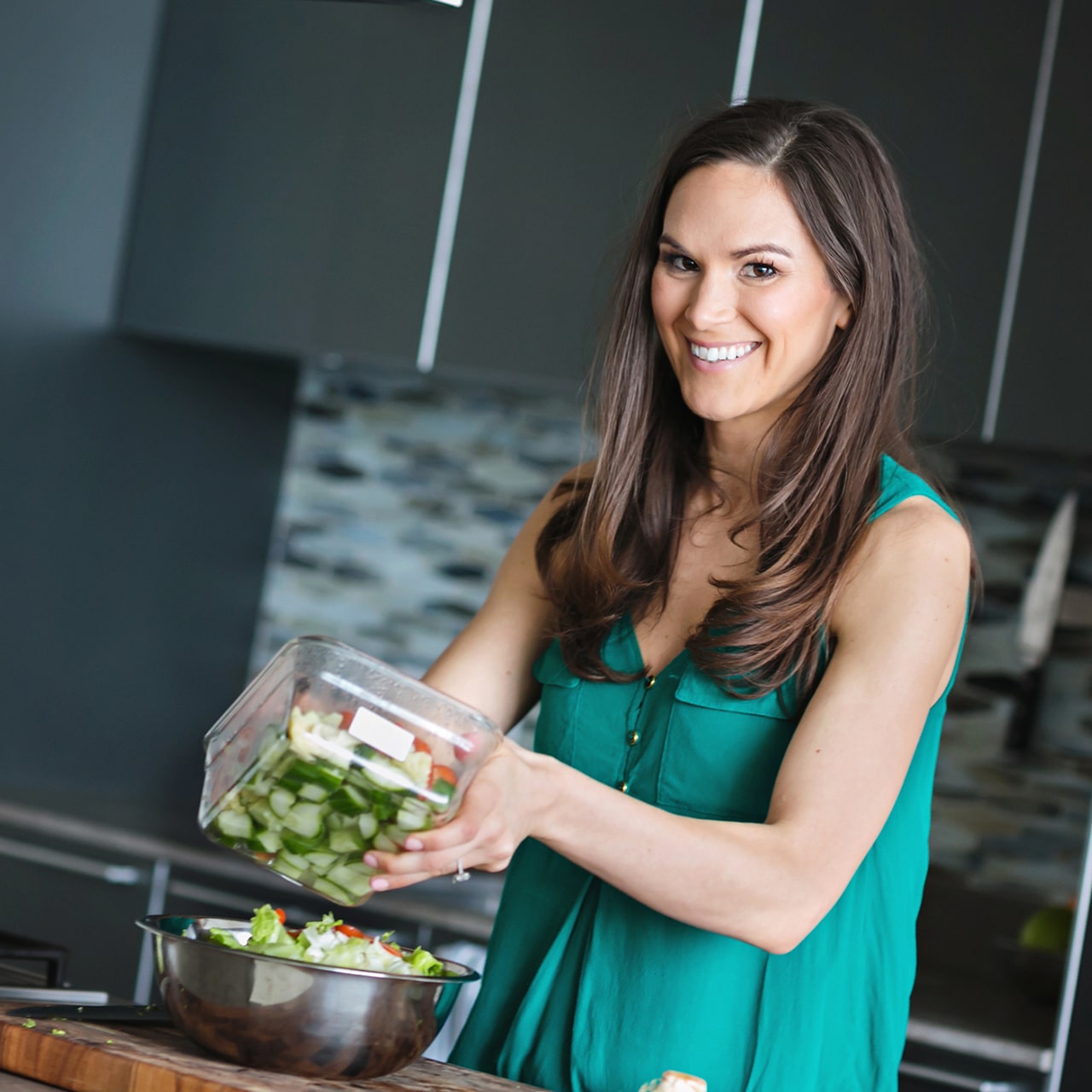
Looking for the best gluten free flours? There are SO many options these days, which both amazing and overwhelming. Learn my top 5!
If you’ve ever wandered down the gluten-free baking aisle at the supermarket, you know how daunting gluten-free cooking can seem based on the endless selection of gluten-free flours. Baking with gluten-free flours isn’t nearly as difficult or intimidating as it seems, though, and it can actually add variety and nutrients to your diet! Here are our five favorite gluten-free flours and how to use them:
1) Almond flour
One of the most nutritionally beneficial, versatile, and delicious gluten-free flours is almond flour. It has a rich taste and it can add moisture, flavor, and texture to cooking. Plus, it’s packed with monounsaturated fat, which is good for your heart, and it has lots of fiber, which can help with weight control. It also contains more manganese, vitamin E, and protein than whole-wheat flour with fewer carbohydrates.
Almond flour is great for baked goods, like cookies, shortbread, pie crusts, scones, cakes, pancakes, and even French macarons. It can also be used as a coating for chicken or fish, as bread crumbs for meatballs, or as a replacement for powdered milk as a dairy-free alternative. Try out almond flour with these recipes for lemon-ginger blueberry scones or butternut squash muffins!
The best part of almond flour is that it’s easy to make at home! Check out our how-to video here!
2) Quinoa flour
Quinoa is an ancient grain that was a staple in the diet of the Incans thousands of years ago. Today, it’s revered for its nutritional benefits and its use as a gluten-free flour! Quinoa flour has a strong and slightly bitter, nutty taste. Its intense flavor can be overpowering, so it’s best to mix it with other types of gluten-free flour. It’s easy to digest, contains all essential amino acids, and is filled with fiber, zinc, folate, iron, and magnesium.
Quinoa flour produces a tender crumb and is best used in cookies, cakes, breads, pastas, and muffins.
3) Rice flour
Rice flour has a very mild taste and a gritty, sand-like texture. There are several types of rice flour, including brown rice flour, white rice flour, and sweet rice flour.
Brown rice flour is a great way to add in more nutrients and fiber. Plus, it helps with the absorption of calcium and is rich in potassium, manganese, magnesium, fiber, protein, iron, and B-vitamins. In fact, brown rice flour contains three times as much vitamin B6 as whole-wheat flour and has 20% of the daily requirement of iron for men and 9% for women! Brown rice flour can be used for breads, pizza crusts, cakes, pasta, muffins, and as a thickening agent for gravies and sauces.
White rice and sweet rice are both great ways to add lightness and texture to recipes. Sweet rice should be used in small amounts to improve texture. It can also be used as a thickener for sauce and can prevent sticking in baking pans. Note that sweet rice flour is made from a sweet, sticky rice and does not actually have added sugar. White rice flour can be used as a thickening agent and in the preparation of cakes, cookies, and breads.
4) Cornmeal
Cornmeal is made from ground sweet corn and is a staple in a gluten-free kitchen because it's rich in fiber and has a variety of uses. It can be sprinkled to help prevent products such as bread or pizza from sticking during baking, used in batters for deep-fat frying, or used to dry products to help batters stick. Of course, it's also an essential ingredient for corn bread, corn muffins, and polenta! Corn flour is similar to cornmeal, but it's more finely ground and adds that corn flavor to products without the coarse texture of cornmeal. When it comes to cornmeal, we recommend purchasing organic to ensure that it's non-GMO.
Try out our delicious recipe for gluten-free corn muffins!
5) Coconut flour
Coconut flour is composed of about 60% fiber, so using small amounts in baking can help increase fiber content. It is also fairly high in protein and low in carbohydrates, but it can be fairly difficult to work with. It works best in recipes with a short shelf-life as well as recipes that use eggs because it’s very dry and doesn’t stick together well. As with quinoa flour, coconut flour sometimes imparts a slightly bitter taste.
Coconut flour can be used as a breading for chicken or fish or in baked goods, like cookies, waffles, pancakes, cakes, and muffins.
These are just a few of the many gluten-free flours available to experiment with! What are your favorite gluten-free flours? Share your ideas and pictures on Facebook, Twitter or Instagram as @prepdish in all 3 places, or leave a comment below.




0 Comments